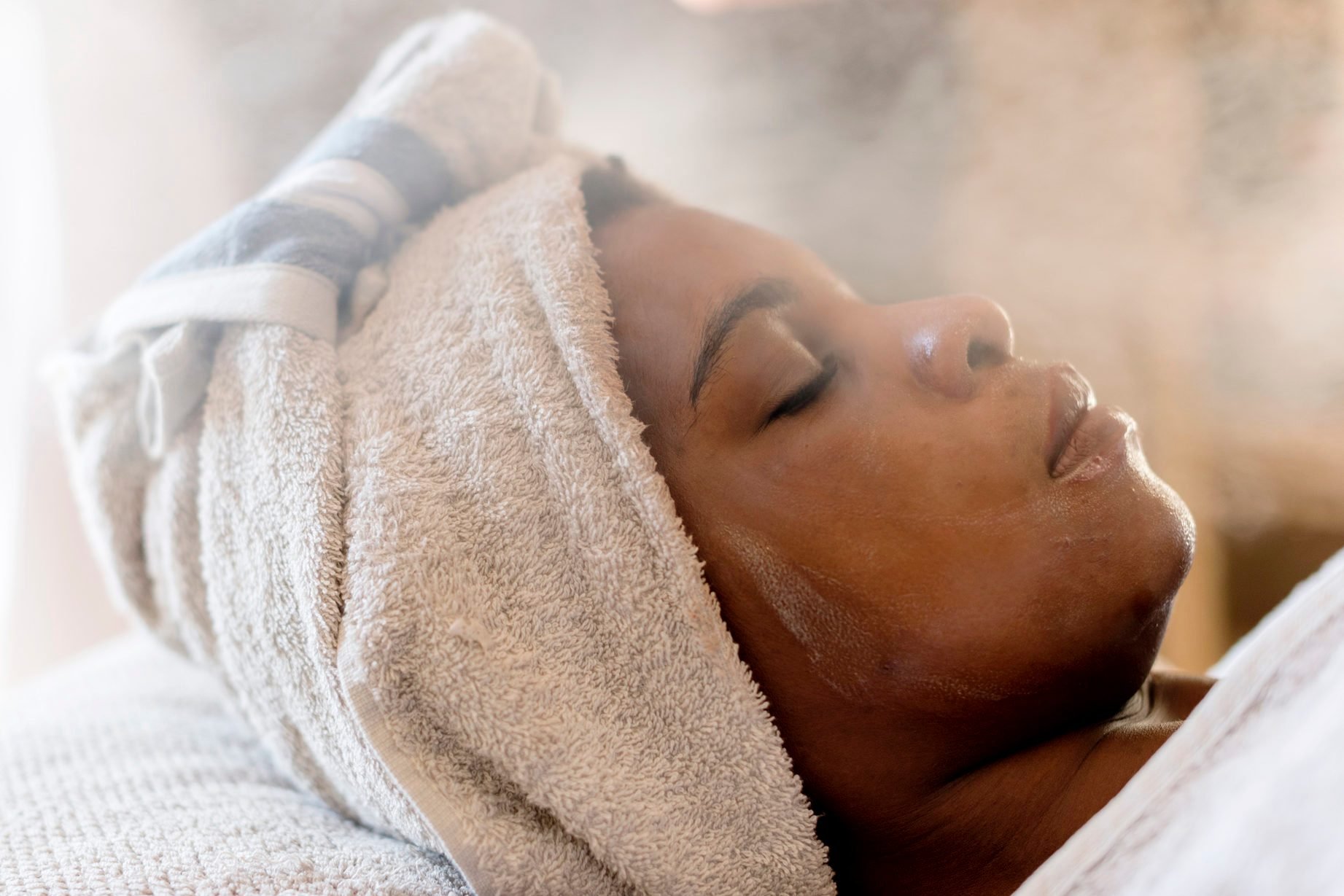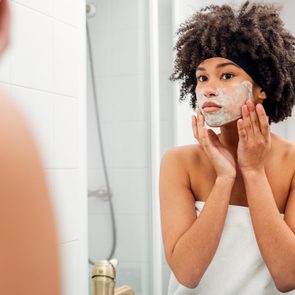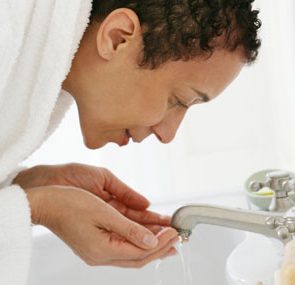Facial Steamer vs. Facial Humidifier: What’s the Difference?
Updated: Mar. 15, 2021
Facial steamers and humidifiers create a mist of water, but that's where their similarities end. Check out why you might prefer one over the other.
The growing trend of facial steamers and humidifiers
From at-home manicures and do-it-yourself massages to homemade face mask recipes, many Americans have gotten creative in order to keep up with their spa treatments and self-care regimens due to pandemic-related closings.
Beyond massage guns and nail kits, one of the beauty categories that has become super trendy over the past 12 months: facial steamers and facial humidifiers.
Celebrities like Gwyneth Paltrow and Kourtney Kardashian are fans, but with some models garnering more than 10,000 reviews on Amazon, it’s clear these appliances aren’t only for the rich and famous.
Here’s everything you need to know about facial steamers and facial humidifiers, including their similarities, differences, and how they work.
Facial steamers vs. facial humidifiers
The difference between facial steamers and facial humidifiers boils down to how much moisture each produces.
“The terms ‘facial humidifier’ and ‘facial steamer’ are often used interchangeably, but there is a difference related to how the mist is produced,” explains Channa Ovits, MD, a board-certified dermatologist at Westmed Medical Group in Westchester, New York.
“Steamers heat the water to produce steam so the resulting mist is necessarily warm,” similar to the steam that you might notice over a pot of boiling water as you cook pasta, Dr. Ovits says.
The machine holds enough water for usually 30 minutes or less of facial steaming and often has a top that contours to the user’s face.
A facial humidifier is a larger device that holds more water; enough to last for hours at a time, explains Stacy Chimento, MD, a board-certified dermatologist at Riverchase Dermatology in Miami.
It can use heat or ultrasonic technology to create the mist, but a humidifier is essentially adding moisture to the air in a room rather than in a targeted way directly to your face.
(Try these younger-looking skin tips from dermatologists.)
With that in mind, the term “facial humidifier” is admittedly a bit misleading. True, the humidifier will offer a moisture boost to your face, but it will also do so for all of your skin—and the room environment as a whole.

How a facial steamer works
To create the steam, the machine heats water which is added to the tank. The moist heat is targeted toward the face—often through a face-shaped vessel you can rest your head inside. It’s recommended you use it for 10 to 30 minutes.
Some machines allow you to adjust the temperature of the steam or set a timer for the treatment; others just feature an “on” and “off” button.
Dr. Chimento says that facial steamers may help:
-
Cleanse pores, as the warm steam can help loosen build-up and soften blackheads
-
Dissolve an oily, waxy substance called sebum, making it easier to remove debris, bacteria, and dirt that can end up causing acne or irritation
-
Boost the skin’s ability to absorb serums and topical treatments
-
Promote the replenishing of collagen and elastin in the skin, and as a result, help combat signs of aging
-
Give a short-term moisture boost to the facial skin
Who it’s best for
“A steamer is for those looking for a deeper cleanse and improved absorption of the ingredients you are applying to the skin. It also provides moisture to the skin but not as long-lasting as a humidifier can,” Dr. Chimento says.
“Facial steamers can help address common skin issues like clogged pores and dull skin by helping provide a deeper cleanse to the skin to remove dirt and sebum.” (Check out these other at-home DIY facial treatments.)
If you tend to struggle with redness or have super-sensitive skin, you may want to steer clear, Dr. Ovits says.
How a facial humidifier works
Humidifiers are larger (allowing them to hold more water than steamers), and are often more complex. Many of the newer humidifiers employ ultrasonic technology in which sonic vibrations break up the water molecules into a fine, cool mist spray.
Most humidifiers have a wide range of settings, allowing you to adjust the humidity level, run time, mist level, fan speed and direction, and more.
“A facial humidifier allows a person to control their environment, which is particularly helpful for those who live in a very dry climate,” Dr. Chimento says. “While humidifiers can help with overall dryness, it doesn’t help cleanse the pores as a steamer can.”
Dr. Chimento says that facial humidifiers may help:
-
Keep your complexion dewy, even during periods of dry weather
-
Help your skin stay hydrated and give you that “glowy” look that comes from your skin cells retaining water that then reflects light
-
Prevent transepidermal water loss, which is when your skin’s water supply depletes through the course of a day
-
Allow for topical treatments called “humectants,” such as hyaluronic acids, to have enough moisture required to enter into the facial cells
Who it’s best for
Humidifiers tend to be best for those who struggle with dry skin top to bottom, and who aren’t worried about acne, aging, or other face skin-specific issues.
Safety tips for using facial steamers and humidifiers
When using anything that utilizes heat, use caution, Dr. Ovits warns, and keep kids and pets at a safe distance. “Read all the instructions before beginning to prevent burns,” she says.
And for both facial steamers and facial humidifiers, and any tool that uses water, “hygiene is very important. Clean and dry the steamer and humidifier thoroughly [as explained in the product manual] to prevent mold or bacterial growth,” Dr. Ovits suggests.
The final verdict
“Each device has a different function, so you could benefit from both,” Dr. Chimento admits, depending on your skin challenges and goals.
Dr. Ovits says that since she’s a busy mom and doctor, she tries to streamline her beauty routine and doesn’t use either a facial steamer or facial humidifier. She does own a room humidifier in her bedroom to use as she’s sleeping, though.
And for a makeshift steamer, Dr. Ovits has a savvy hack to try: “I’ll be honest, sometimes, I just lean over my steaming pasta after I drain it to get that spa experience—being very careful not to burn myself!”
Or, if you want to recreate a similar facial steamer-like experience any time, heat a bowl of water in the microwave until it steams, or heat water in a kettle and pour it into a bowl.
Grab a towel, and position your head under the towel and about 6 inches above the bowl for a 5- to 10-minute steam session (or until the water stops steaming).
Next, here’s how to make your skin glow naturally.




















